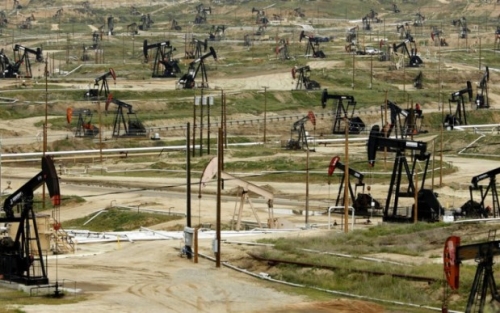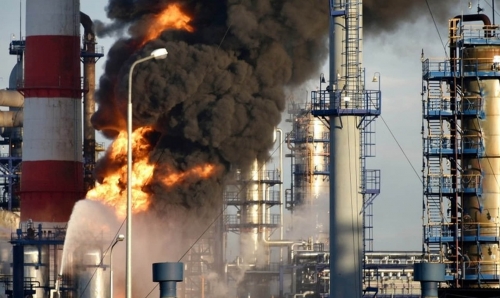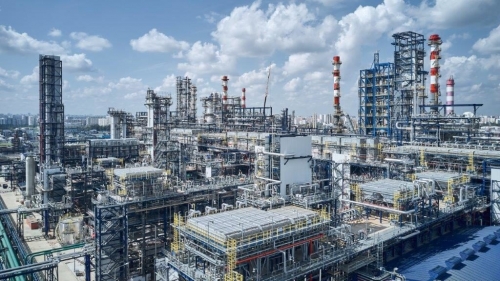Another rangebound week for oil prices, as tariff concerns were allayed after the US struck a deal with Japan and is reportedly set to make one with the EU. Gas prices on the Henry Hub in the US fell to recent lows this week due to record output and forecasts of lower demand over the next two weeks.
BKR Rig Count | The total active drilling rigs in the United States decreased by 2 last week, to 542. Oil rigs dropped by 7 to 415, and gas rigs increased by 5 to 122. Rig count in the Permian Basin dropped by 3 to 260 | Jul 25 | BKR NAM Rig Count
US Crude Inventories, excluding those in the Strategic Petroleum Reserve (SPR), decreased by 3.2 MMbbl to 419 MMbbl (about 9% below the 5y average for this time of year). On the products side, gasoline decreased by 1.7 MMbbl (slightly above the 5y average). Distillate fuels increased by 2.9 MMbbl (19% below the 5y average). Total commercial petroleum inventories decreased by 5.2 MMbbl | Jul 18 | EIA Weekly Report
Russia’s gas output declined in the first half of the year as higher exports to China and increased domestic demand failed to make up for lost flows to Europe via Ukraine. The nation produced 334.8 bcm of natural and associated gas through June, down 3.2% from the same period a year ago, according to Bloomberg calculations based on industrial output data from the nation’s Federal Statistics Service Jul 23 | Bloomberg
European Union measures to restrict imports of Russian fuel and surging supplies of lighter crude are driving up diesel prices across the world, the boss of Europe’s largest oil refiner said. Diesel futures in Europe have surged at times in recent weeks, touching the equivalent of $110 a barrel. That’s in part because traders are having to find supplies from further afield since a ban on Russian imports came into effect, Patrick Pouyanne, Chief Executive Officer of TotalEnergies SE said on the company’s second-quarter earnings call | Jul 24 | Bloomberg
At least three large oil and gas companies have walked away from an initiative seeking to put the industry on a credible path toward net zero emissions. Shell Plc, Aker BP ASA and Enbridge Inc. have all left the expert advisory group of the Science Based Targets initiative, the leading global standard setter for corporate climate targets. The retreat, started late last year after the companies were told that a net zero emissions strategy accredited by SBTi would require them to stop developing new oil and gas fields | Jul 22 | Bloomberg
Russia has mounted its first attacks on Ukraine's natural gas production facilities in almost four months, the country’s state run gas producer, importer and distributor Naftogaz said on Tuesday. Naftogaz said that its gas production installations were hit by dozens of Russian Shahed attack drones on Monday night. The strikes resulted in some “destruction”, Naftogaz said in a statement, without providing further details | Jul 22 | Upstream
The Mexican government has launched a securities offering to strengthen Pemex’s financial position and liquidity to allow the state-owned oil company to meet its short-term obligations. Pemex is the world’s most indebted oil company at $101 billion and owes approximately $20 billion to its suppliers. The size of the issuance was not disclosed, but the Financial Times reported that the Mexican government is preparing to sell up to $10 billion of debt to help bail out Pemex | Jul 23 | Upstream
BP Plc, under pressure from activist investor Elliott Investment Management to improve its performance, appointed the former boss of a building-materials company as its new chairman, replacing Helge Lund. The company said Monday that Albert Manifold, previously chief executive officer of CRH Plc, will join as a non-executive director and chair-elect on Sept. 1. Lund, who already announced in April that he was going to step down, will depart on Oct. 1. Manifold will step into the role at a challenging time for BP and Elliott immediately called for a turnaround in performance | Jul 21 | Bloomberg
Looking ahead
Global supply of liquefied natural gas is set to surge the most since 2019 next year, primarily driven by production additions in North America, the International Energy Agency said. The increase in supply will accelerate to 7%, or 40 billion cubic meters a year in 2026, following a 5.5% expansion this year, the IEA said in its quarterly gas market report. A project in Qatar will also add to the growth. “This is expected to somewhat ease market fundamentals and eventually contribute to a stronger demand growth,” said Gergely Molnar, a gas analyst at the IEA, during a webinar. “2026 will be marking the first year of the LNG wave and it will be also in a way a test how demand responds to the stronger growth, especially in Asia.” LNG’s role in industry and power generation has grown, and trade already picked up this year amid substantial supply additions, which were around 60% higher than in 2024. LNG Canada recently started exports, and most of the additional global flows are being absorbed in Europe which is rushing to fill its storage sites for next winter. Qatar’s North Field East LNG expansion project is set to start operations in the middle of next year, “although much of its expected upside will spill into 2027,” the IEA said in the report. For the rest of 2025, however, the IEA cautioned that the market remains vulnerable to shocks. “While new liquefaction projects are set to bring further incremental volumes to market in the second half of the year, any unexpected hiccups in the start-up and ramp-up schedules of these plants would effectively tighten the global LNG balance,” it said | Jul 22 | Bloomberg
Rystad Oil Macro Report: Brent to hold at $67 per barrel in 2H2025 as geopolitical premium fades and inventory pressure mounts toward year-end | Brent crude prices remained broadly steady through early June, before briefly spiking amid renewed tensions in the Middle East. The subsequent ceasefire agreement quickly erased any geopolitical risk premium, though underlying risks remain as sporadic attacks on vessels continue. However, the Strait of Hormuz, a key oil transit chokepoint, has so far avoided major disruption and is no longer in the immediate spotlight. The recent OPEC+ announcement to accelerate the unwinding of production cuts came largely in line with expectations and had limited market impact. Benchmark prices, including Brent and WTI, continue to carry minimal geopolitical risk premium, though market volatility remains elevated. Reflecting a slightly weaker outlook, Rystad has revised down its 3Q25 Brent forecast to an average of $68 per barrel, from $69 in June. While tightness in crude and liquids balances is expected to persist through the end of August, market conditions are likely to loosen in 4Q25 due to lower refinery runs during the fall maintenance season and weaker product demand. Global liquids supply in 2025 has been revised up, driven by a sharp ramp-up in OPEC+ output, with the OPEC+ adding over 1.2 million bpd between June and August. US production is set to grow by 420,000 bpd, led by the Permian, despite reduced rig activity. Non-OPEC (excluding US) supply is forecast to rise by 951,000 bpd, with key contributions from Brazil, Canada, Guyana, Argentina, and Norway, supported by project ramp-ups and investment momentum. Global oil demand is projected to reach 104.6 million bpd in 2025, up 698,000 bpd year-on-year, driven by jet fuel and petrochemical feedstocks. Most of the growth is expected in 2H2025, contingent on improving trade sentiment. Demand growth is increasingly diversified, with the Middle East, India, and Africa emerging as key contributors. China’s rising naphtha use contrasts with declining gasoline demand due to strong EV and LNG truck adoption. Meanwhile, India and Europe show modest gasoline growth, supported by economic strength and rising transport activity | Jul 18 | Rystad

%20(1).png)



